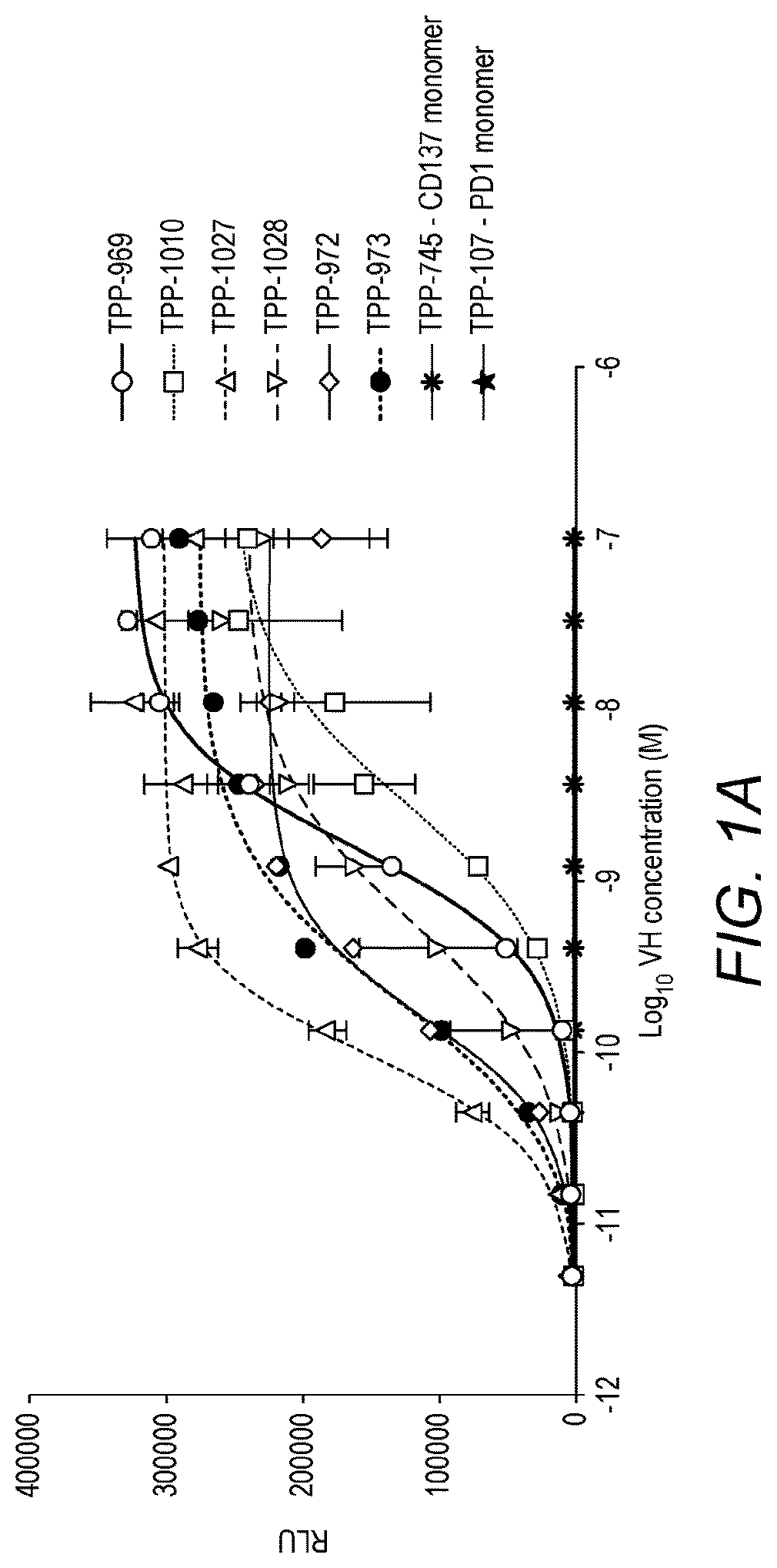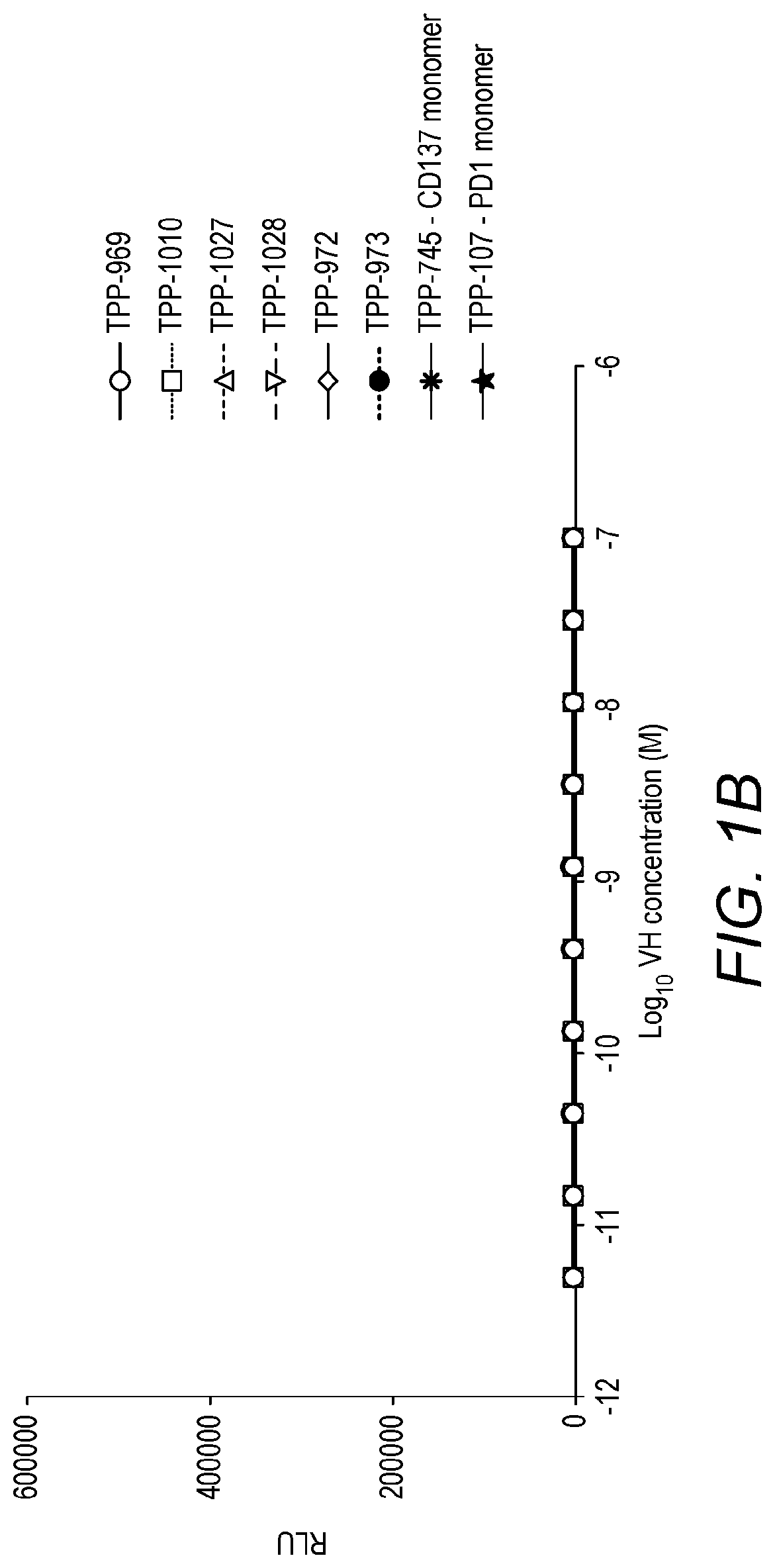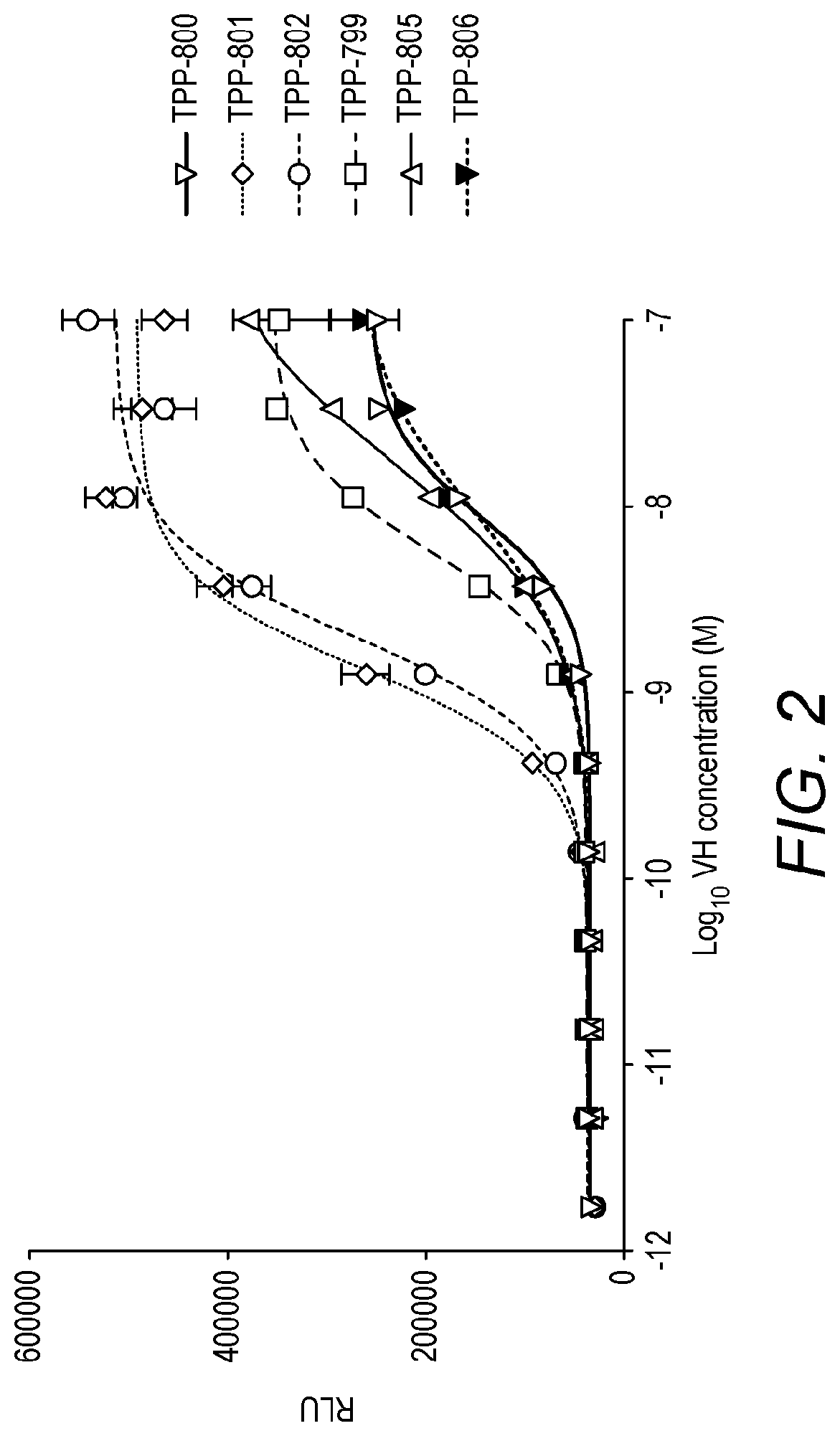Binding molecules
a technology of binding molecules and molecules, applied in the field of binding molecules, can solve the problems of systemic cd137 effects leading to unwanted side effects, murine models with severe toxicity, and tumor cell lysis, and achieve the effects of reducing the risk of toxicity, and reducing the effect of cd137 signalling
- Summary
- Abstract
- Description
- Claims
- Application Information
AI Technical Summary
Benefits of technology
Problems solved by technology
Method used
Image
Examples
example 1
ion of Tg / TKO Mice
[0358]Triple knock-out mice carrying a human heavy-chain antibody transgenic locus in germline configuration within a background that is silenced for endogenous heavy and light chain antibody expression were created and immunised as previously described (WO2004 / 076618, WO2003 / 000737, Ren et al., Genomics, 84, 686, 2004; Zou et al., J. Immunol., 170, 1354, 2003 and WO2016 / 062990, WO2018 / 127709, WO2018 / 127710).
example 2
ion Protocol
[0359]For CD137 immunisation, Tg / TKO mice aged 8-12 weeks were immunised with a human CD137-human Fc chimeric protein. PD-1 binding Humabody® VH molecules were generated as described in WO2018 / 127709 and WO2018 / 127710.
example 3
SA
[0360]Serum was collected from mice before and after immunisation and checked by ELISA for the presence of serum human CD137 reactive heavy chain antibodies in response to immunisation with CD137 antigen.
PUM
| Property | Measurement | Unit |
|---|---|---|
| length | aaaaa | aaaaa |
| affinity | aaaaa | aaaaa |
| half-life | aaaaa | aaaaa |
Abstract
Description
Claims
Application Information
 Login to View More
Login to View More - R&D
- Intellectual Property
- Life Sciences
- Materials
- Tech Scout
- Unparalleled Data Quality
- Higher Quality Content
- 60% Fewer Hallucinations
Browse by: Latest US Patents, China's latest patents, Technical Efficacy Thesaurus, Application Domain, Technology Topic, Popular Technical Reports.
© 2025 PatSnap. All rights reserved.Legal|Privacy policy|Modern Slavery Act Transparency Statement|Sitemap|About US| Contact US: help@patsnap.com



